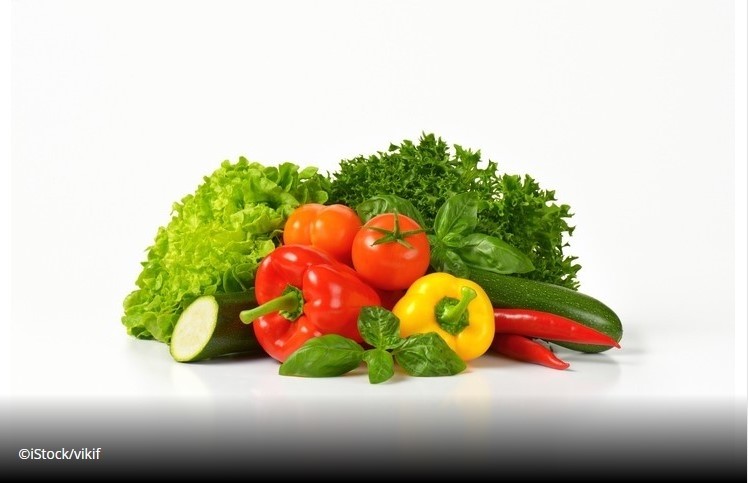Study linking raw veg intake to CVD not to be taken as verbatim, say experts

Appearing in the journal Frontiers in Nutrition, the paper suggests a link but also acknowledges the influence and distortion residual confounding could have on the remaining associations.
The team that includes members from the University of Oxford also suggest the need to reappraise the evidence on the burden of CVD disease attributable to low vegetable intake in high-income populations.
The recommendation was elaborated on by Dr Dipender Gill, who points to other study limitations that mean researchers are unable to infer what causes what in the complex relationship involving vegetables, cardiovascular risk and other factors.
“As the authors acknowledge, there is the possibility of residual confounding affecting the association estimates.
“Furthermore, many of the considered confounders that were adjusted for may actually represent mediating mechanisms,” Dr Gill adds.
“For example, vegetable consumption may reduce cardiovascular risk by lowering blood pressure and bodyweight and improving glycaemic control.
“By adjusting for such traits, the authors may inadvertently be negating some of the mechanisms by which vegetable consumption is exerting beneficial effects.”
Dr Gill, a NIHR Clinical Lecturer in Clinical Pharmacology and Therapeutics at St George’s, University of London, adds that while the study contributes to the overall body of evidence, it should not discourage individuals from consuming vegetables.
“There is an abundance of other evidence strongly supporting the health benefits of a balanced diet that is rich in vegetables.”
Study approach
Along with The Chinese University of Hong Kong and the UK’s University of Bristol, the study drew upon data from the UK Biobank cohort, where 399,586 participants without prior CVD were included in the analysis.
Raw and cooked vegetable intakes were measured with a validated dietary questionnaire at baseline, while further analysis was used to estimate the associations between vegetable intake and CVD incidence and mortality, adjusted for socioeconomic status, health status, and lifestyle factors.
The potential effect of residual confounding was assessed by calculating the percentage reduction in the likelihood ratio (LR) statistics after adjustment for the confounders.
In accounting for the study findings, the team proposed various mechanisms by which these associations might be mediated with diets high in vegetables having, on average, fewer calories and replace foods that are high in fat, sodium, and glycaemic load.
It has also been hypothesised that the lower risk might be mediated by micronutrients, namely, higher intake of vitamins, polyphenols, and antioxidant compounds, which are required for regulating various biological processes, including anti-oxidation, anti-inflammation, lipid metabolism, and endothelial function.
As for the different associations of raw and cooked vegetables observed in this and other studies, several possible mechanisms have been proposed in previous studies one proposal put forward the effect of cooking processes on the digestibility of food as well as the bioavailability of nutrients.
One study also found that vitamin C retention after cooking ranged from 0 to 91% for various combinations of cooking methods and vegetable, with higher retention after microwaving and lower retention after boiling.
Nutrients and bioactives
“There is not one “vegetable”, but they are all very different,” explains Professor Gunter Kuhnle, Professor of Nutrition and Food Science at the University of Reading.
“An analysis based on intake of total vegetable intake is more likely to look at behavioural factors than the effect of the actual food.
“Vegetables have a wide range of nutrients and bioactive that are known to be beneficial for health: fibre, vitamins, minerals and plant bioactives that many believe to be healthy,” the Professor adds.
He goes onto say that dietary recommendations usually stress the importance of a wide range of different fruits and vegetables: eating exclusively cucumbers or kales is unlikely to have the same beneficial effect as eating a lot of different vegetables.
“Unfortunately, it was not possible to investigate the variety of vegetables consumed in this study.
“In summary, this is a very interesting study – but not one that should be used as a justification to stop eating vegetables.”
Source: Front. Nutr
Published online: doi: 10.3389/fnut.2022.831470
“Raw and Cooked Vegetable Consumption and Risk of Cardiovascular Disease: A Study of 400,000 Adults in UK Biobank.”
Authors: Feng Q, Kim JH, Omiyale W, Bešević J, Conroy M, May M, Yang Z, Wong SYS, Tsoi KKF, Allen N and Lacey B














